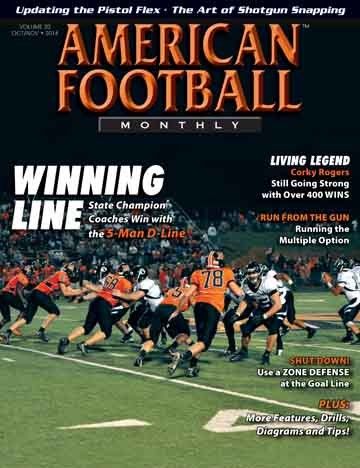Article CategoriesAFM Magazine
|
Lasting Legacy - At 70, Corky Rogers is still going strong as a member of the exclusive 400 win club.© More from this issueIt was a misty, cool, December night in Florida. Things looked bleak for coach Corky Rogers and his Bolles School team from Jacksonville. The Bulldogs were trailing a powerhouse Santa Fe team 17-6 with less than a minute to play in a semifinal playoff game. Santa Fe was loaded with future NFL players. “We were just getting it taken to us,” Rogers said. “We were trying everything you could try, because nothing was working.” In that final minute, Rogers made an adjustment and pulled out a unique formation that he’d never used. “We went to basically what you’d call an end-over formation,” he recalled. “We brought the tackle over to the same side as the tight end and the wing. We had one person left of the center, a guard. We put a wing over there to make it look like there were more people. And then we ran off-....The full article can only be seen by subscribers.
|
|
|||||||
| HOME |
MAGAZINE |
SUBSCRIBE | ONLINE COLUMNISTS | COACHING VIDEOS |
Copyright 2025, AmericanFootballMonthly.com
All Rights Reserved





